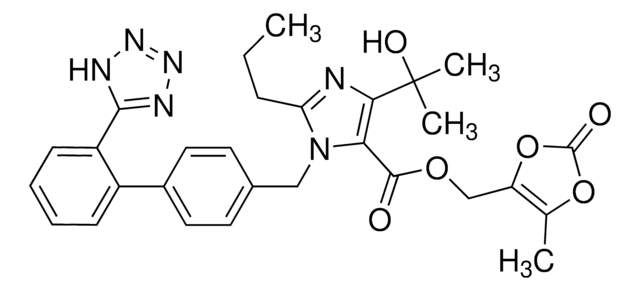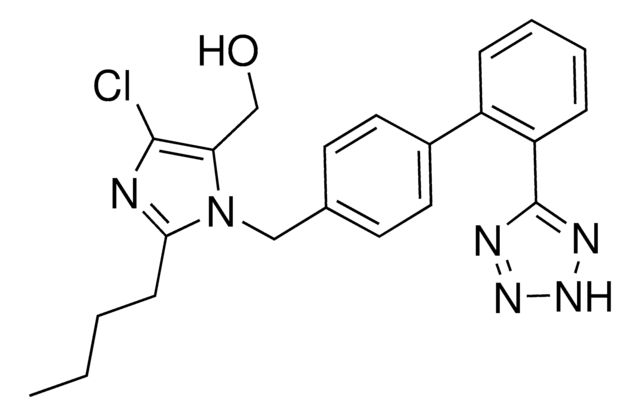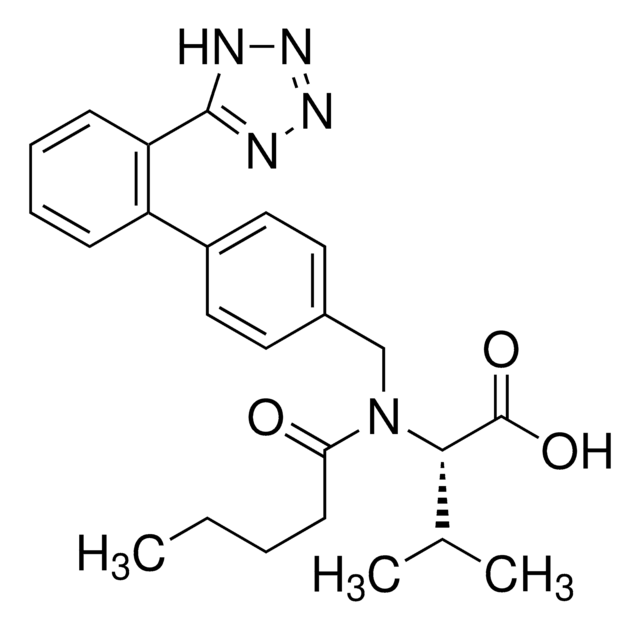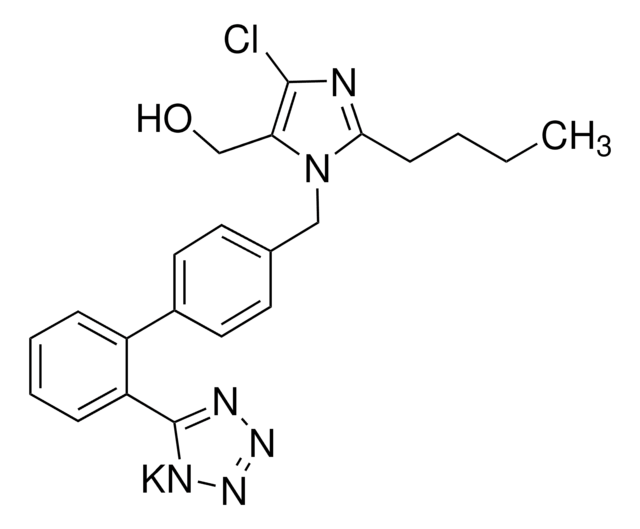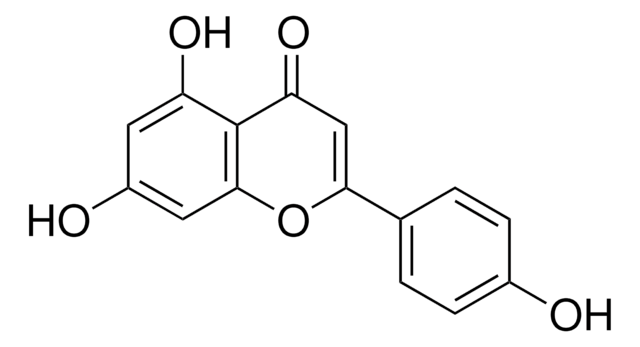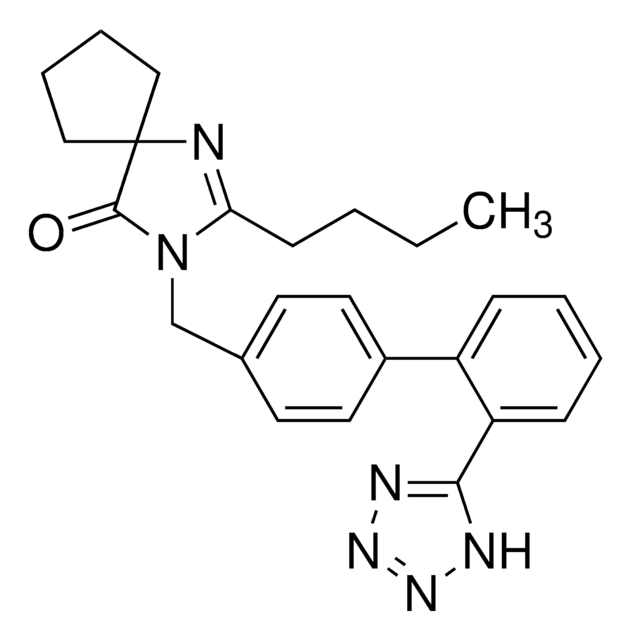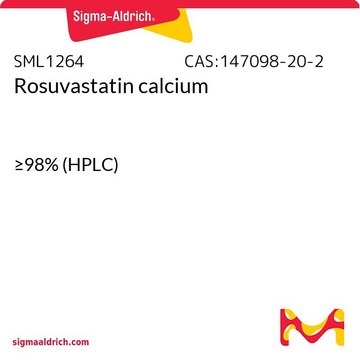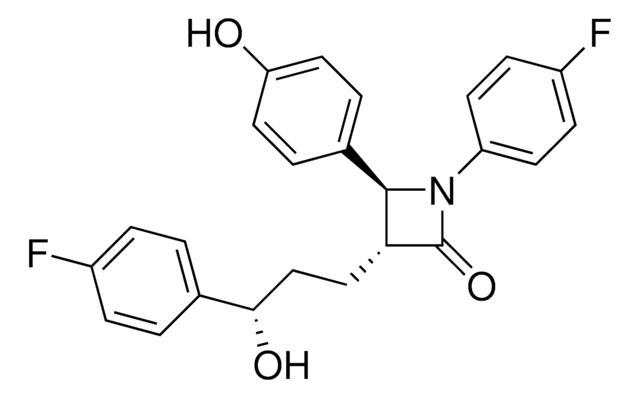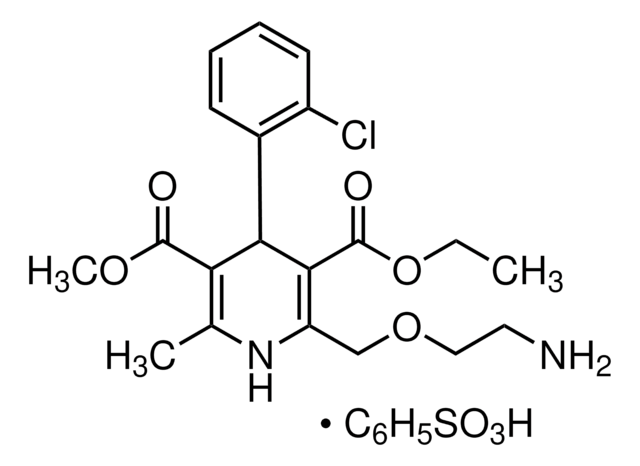Kluczowe dokumenty
SML1394
Olmesartan
≥98% (HPLC)
Synonim(y):
4-(1-Hydroxy-1-methylethyl)-2-propyl-1-[[2′-(2H-tetrazol-5-yl)[1,1′-biphenyl]-4-yl]methyl]-1H-imidazole-5-carboxylic acid, Olmesartan acid
About This Item
Polecane produkty
Poziom jakości
Próba
≥98% (HPLC)
Formularz
powder
kolor
white to beige
rozpuszczalność
DMSO: 20 mg/mL, clear
temp. przechowywania
2-8°C
ciąg SMILES
OC(C)(C)C1=C(C(O)=O)N(CC2=CC=C(C3=C(C4=NNN=N4)C=CC=C3)C=C2)C(CCC)=N1
InChI
1S/C24H26N6O3/c1-4-7-19-25-21(24(2,3)33)20(23(31)32)30(19)14-15-10-12-16(13-11-15)17-8-5-6-9-18(17)22-26-28-29-27-22/h5-6,8-13,33H,4,7,14H2,1-3H3,(H,31,32)(H,26,27,28,29)
Klucz InChI
VTRAEEWXHOVJFV-UHFFFAOYSA-N
informacje o genach
human ... AGTR1(185)
Zastosowanie
Działania biochem./fizjol.
Kod klasy składowania
11 - Combustible Solids
Klasa zagrożenia wodnego (WGK)
WGK 3
Temperatura zapłonu (°F)
Not applicable
Temperatura zapłonu (°C)
Not applicable
Wybierz jedną z najnowszych wersji:
Certyfikaty analizy (CoA)
Nie widzisz odpowiedniej wersji?
Jeśli potrzebujesz konkretnej wersji, możesz wyszukać konkretny certyfikat według numeru partii lub serii.
Masz już ten produkt?
Dokumenty związane z niedawno zakupionymi produktami zostały zamieszczone w Bibliotece dokumentów.
Klienci oglądali również te produkty
Nasz zespół naukowców ma doświadczenie we wszystkich obszarach badań, w tym w naukach przyrodniczych, materiałoznawstwie, syntezie chemicznej, chromatografii, analityce i wielu innych dziedzinach.
Skontaktuj się z zespołem ds. pomocy technicznej